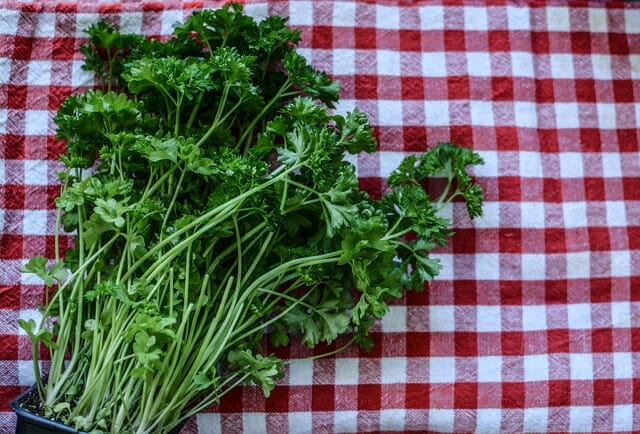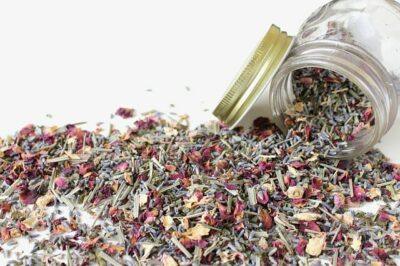I’ve had an herb garden for as long as I can remember, and there are more than a few things I’ve learned the hard way. The biggest lesson was complacency with my herb harvests. The first frost will absolutely toast some herbs like basil, mint and lemon balm. The first freeze will wipe out most of the rest, although chives and thyme seem to hold on a bit better. Now I harvest and preserve those herbs, for the winter to come well before the first frost.
Preservation Techniques
We’re going to cover five herb preservation techniques. All of them include drying the homegrown herbs and wild plants to various degrees, but there are a couple of variations. What you’re trying to do is avoid mold growth while preserving flavor.
Grow Your Own Powerful Herbal Survival Remedies!
1. The food dehydrator
Food dehydrators are typically defined as a layer of trays with a heating element at the bottom and sometimes a small fan to circulate the air. You can dry various and multiple types of herbs. Herbs at the bottom which are closest to the heating element will dry out faster. You need to check and either rotate or remove trays as the herbs dry.
Typically I’ll put more robust herbs likes chives, sage and rosemary on the bottom tray and more delicate homegrown herbs like basil and mint toward the top. I’ll also check them periodically, knowing that some might dry before others.
2. Oven drying
This is a fairly robust technique and doesn’t work particularly well, with more delicate herbs like basil and mint varieties including lemon balm. However, it works great with chives, sage, oregano and marjoram leaves on the stem; as well as thyme and rosemary. The starting temperature is as low 150 degrees Fahrenheit and the duration varies depending on the herb.
The best way to manage this approach is to cover a baking sheet with foil and distribute the whole herbs on the stem in one layer on the sheet and place in the oven. You need to check on them every 20 minutes or so and possibly turn or toss some of them to expose as much surface area as possible to the heat. Once they’re dried, get them out of the oven or they may brown. You’re trying to preserve color, not lose it. Once they’re dried, strip the leaves from the stem and crush to the consistency you like.
Make Your Own Herbal Medicines With Homegrown Herbs
However, there are some wild plants like blackberry leaves or black raspberry leaves that are roasted at 400 degrees Fahrenheit for 20 to 25 minutes. The result will be a very crisp, brown leaf that is then easy to crush into a tea leaf consistency.
I also like the oven technique for natural spices like juniper berries and red sumac berries. I’ll use a low temp like 150 degrees Fahrenheit. Once they’re sufficiently dried I’ll toss the berries together and pour them into a pepper mill. In an off-grid environment, many spices like pepper, turmeric and others will be in very short supply. Using these berries as a flavor-note for foods will be a welcome treat.
I’ve also left the juniper berries on the stems and have later infused both the berries and the juniper needles to make juniper tea. Be forewarned: Your house will smell like a pine tree if you gently roast them on the stem, but some of us like that.
3. Sun drying
Without question this is the oldest technique for drying and preserving herbs and has been done for thousands of years. There are essentially two ways to approach. The best is to place the herbs on a foil-lined baking sheet and place them in a sunny spot indoors. This protects them from moisture caused by rain or morning dew and the general dust, dirt and pollen that is constantly in the air outside.
If you do choose to dry the herbs outside, a picnic table is a good surface area well off the ground and easily exposed to the sun. The standard technique is to once again line a baking sheet with foil, but you want a baking sheet with a raised lip around the edges. You then wrap plastic wrap around the baking sheet, leaving a one-inch gap on either side. This will help trap the heat, but the gaps allow the moisture to transpire to ensure the drying process.
All herbs can be used with this technique, but once again you need to check them from time to time to assess when they’re done. You also shouldn’t leave them out overnight due to morning dew. The garage is a good storage place while you wait for the return of the morning sun. Be sure to get them inside if rain is in the forecast.
4. Refrigerator drying
This technique requires dedicated shelf space in the fridge with a layer of cheesecloth on the shelf with the herbs on top. The refrigerator is actually a very dry environment. Therefore, we try to store fresh vegetables in the crisper where moisture can be maintained and managed.
The downside to this technique is the need to dedicate refrigerator space to the herbs for anywhere from one to three weeks. Fortunately, I have a second refrigerator freezer in the garage and that makes it easier to apply this approach.
The upside is that this technique really preserves the color of the herbs. It is important to make sure they’ are as dry as possible. Moisture content in stored herbs can lead to mold growth. In fact, I’ll usually give any of my home-dried herbs a sniff from the jar before using. It should smell like the herb you want to use. If there is any hint of mildew, toss the contents of the jar and wash it well with hot, soapy water and a good rinse.
All herbs can be dried with this approach and it’s particularly good for the more delicate herb varieties like basil and mint.
5. Herbed ice-cubes
This has actually emerged as one of my favorite techniques for herb preservation. It’s as simple as dropping a tablespoon of freshly chopped herbs into each ice-cube compartment and then filling with water and freezing. Once the cubes are frozen, I’ll mark on a plastic sandwich bag the name of the herb and store in the freezer.
It makes portion control for recipes super-simple. If you’re making a marinara sauce that calls for two tablespoons of oregano, you just drop two of the oregano ice-cubes into the bubbling pot and you’re good to go.
Better yet, the herbs will retain all of their natural oils and flavors. It’s great to have fresh herbs in January and you can take it up a notch by substituting chicken or beef broth for water before you freeze the cubes. The broth adds a boost of flavor and the herbs will do the same.
I’ve also used this technique for things like goldenrod flower tops which make a great tea. Drying goldenrod flowers is tricky and they lose most of their subtle, licorice flavor. I just drop a handful of goldenrod ice-cubes into a pot of boiling water. Shut off the heat and let it steep while the cubes slowly melt.
Herb Storage
Storing your herbs is not complicated and there are a variety of options.
You could buy herb jars, small or medium canning jars or even save old herb packages and wash, dry and refill them. The critical thing is to know that the herbs are sufficiently dry. Moisture is the enemy with food storage, and it especially applies to home-dried herbs and spices.
An herb rack or pantry is a good storage option. You could always keep them in the fridge if you have the space or want to ensure no spoilage. When it’s time to harvest and preserve again I’ll toss the old herbs, wash the jars and start over.
Herbs can be very expensive to buy at the store, and if we’re in an off-grid environment, pretty much impossible. Even if you only fill a few jars with your home-grown herbs, you’ll appreciate that you made them from scratch.
What advice would you add for storing and preserving herb? Share your thoughts in the section below:
 Off The Grid News Better Ideas For Off The Grid Living
Off The Grid News Better Ideas For Off The Grid Living





